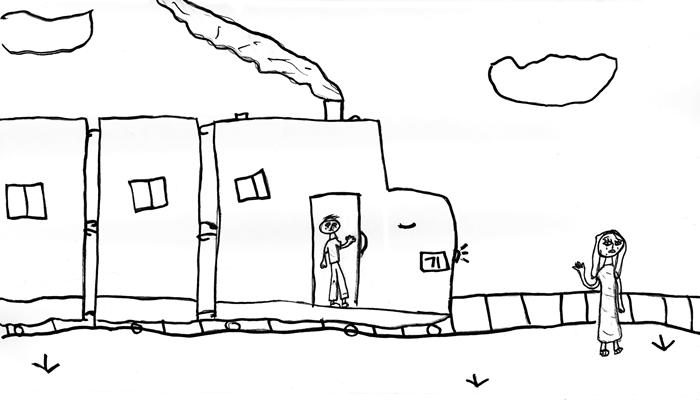

2016/2017
Abandonedc.1928; New York, New York, to Atchison, Kansas, USA
I’ve faced ups and downs, but mostly life’s been great. I have food, and a roof over my head, and I’ve never imagined life without them. Some may say I took my life for granted — until I heard the story of my great-grandfather. With no shoes on his feet or a blanket when the weather dropped, he knew only poverty. In Italy, Jim’s parents had their American dream, but America didn’t exactly go as they had dreamed. They spent their last penny to buy tickets to America and journey from their homeland to the dreamland. At the end of each day they had cuts and scars for little pay and had six children to raise. As if their situation couldn’t get any worse, Jim’s father died. Jim’s mother was never around. She worked before the sun rose, and Jim was already asleep when she returned. With no other choice, Jim’s mother had to say goodbye to her two oldest children. Jim was only six, and his sister was seven. At such a young age, all Jim could wonder was Why? Soon he and his sister would leave the busy streets of New York City and ride to the quiet plains of Kansas on the Orphan Train.1 Jim will never forget the expression on his mother’s face as she sent him away. Jim walked onto the train, heart pounding, leaving everything as he stepped onto some dirty train. All he could hear was crying — babies who didn’t know better, kids who missed their parents, and his own weeping. Jim looked out the windows to see his mom for the last time. He saw tears roll down her face. Why would she do this if she was so devastated? Despite all the crying and screaming, Jim managed to fall asleep as the sun began to set. Morning came, and Jim no longer saw the tall buildings and bright streetlights of the city. Instead he saw cornfield after cornfield. “Do you really think we’ll find a home for all these kids?” Jim heard an older lady say to a man. “Yeah. Nowadays, people need extra help on their farms. Most of these kids will just work, but it’ll be fine. Better than their old life anyway. Plus the siblings don’t have to be in the same family.” Was this really true? Jim dreamed of nice loving parents, but now they’d probably beat him if he didn’t work hard enough! And without his sister?! She was all he had left. Would anyone want him? He was all alone with nothing left. As days went by, Jim found a family who took him in like their own. Sadly, he never saw his sister again, but he persevered through the adversity he faced and lived a better life. He even went on to serve his country in World War II, conquering hardship and suffering to provide a better life for Americans. The hardships that my great-grandfather endured have made me more grateful for my life. Kharis Perona; Missouri, USA Illustrator: Grace Suellentrop; Missouri, USA
1. Between 1854 and 1929 about 200,000 orphaned or homeless children in the United States were carried by train to areas where they could find a family to care for them — or even adopt them. The children were often expected to work on the family’s farm.
This copyrighted story may be copied and/or printed for limited classroom or personal use. To reprint this story in an article about The Grannie Annie, please contact The Grannie Annie Family Story Celebration for permission.
Return to Vol. 12 Stories page
|
Built by Hen's Teeth Network